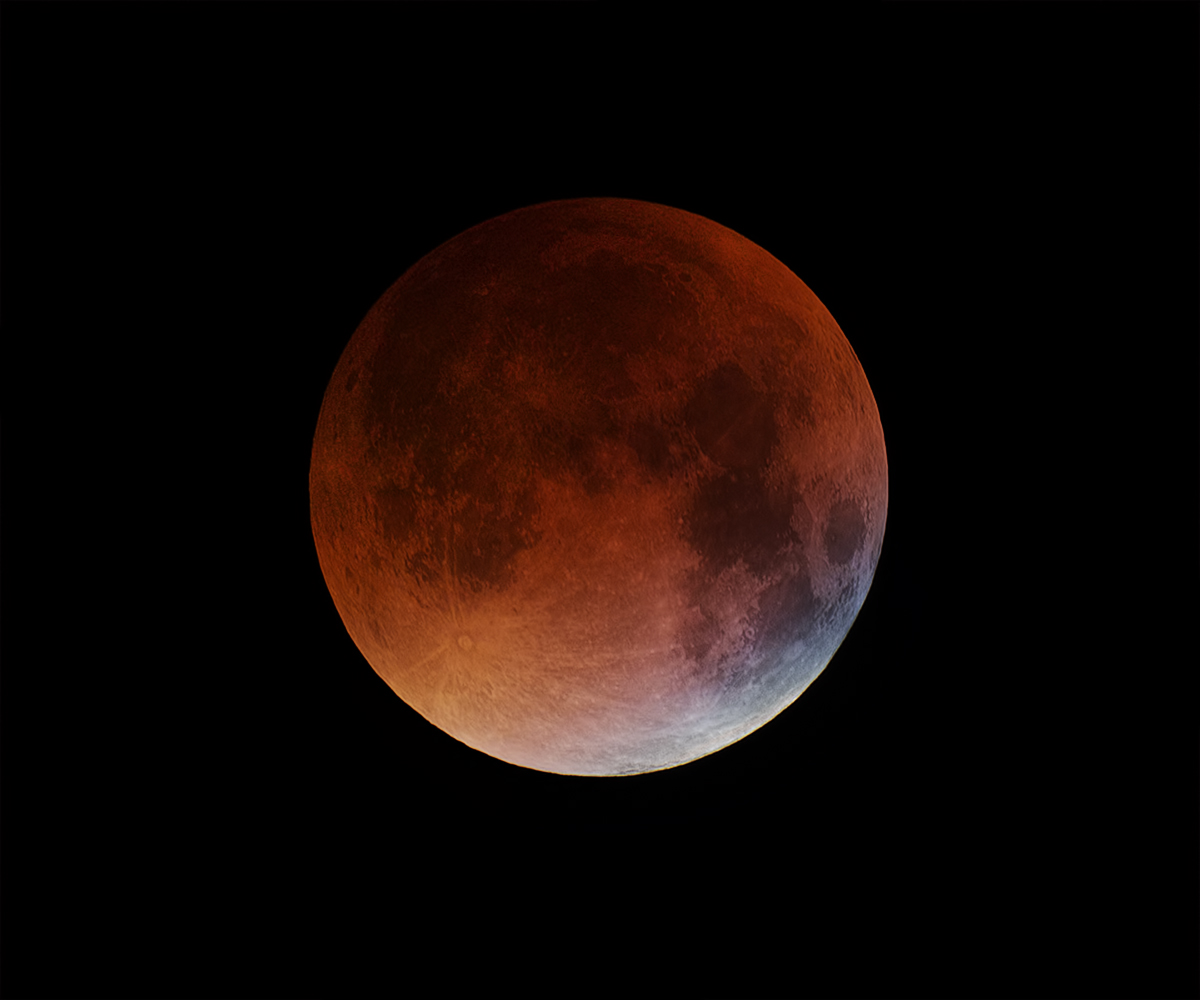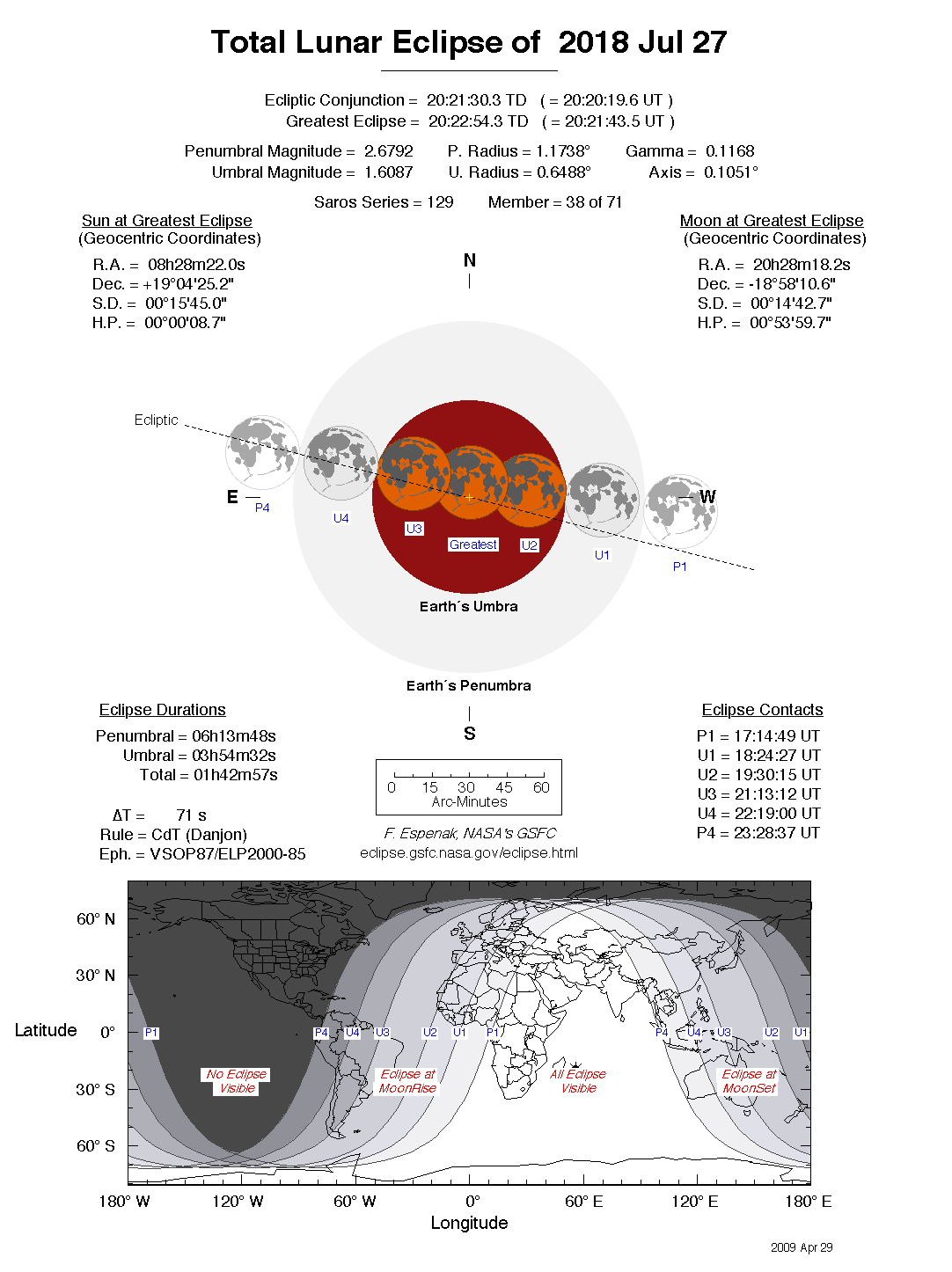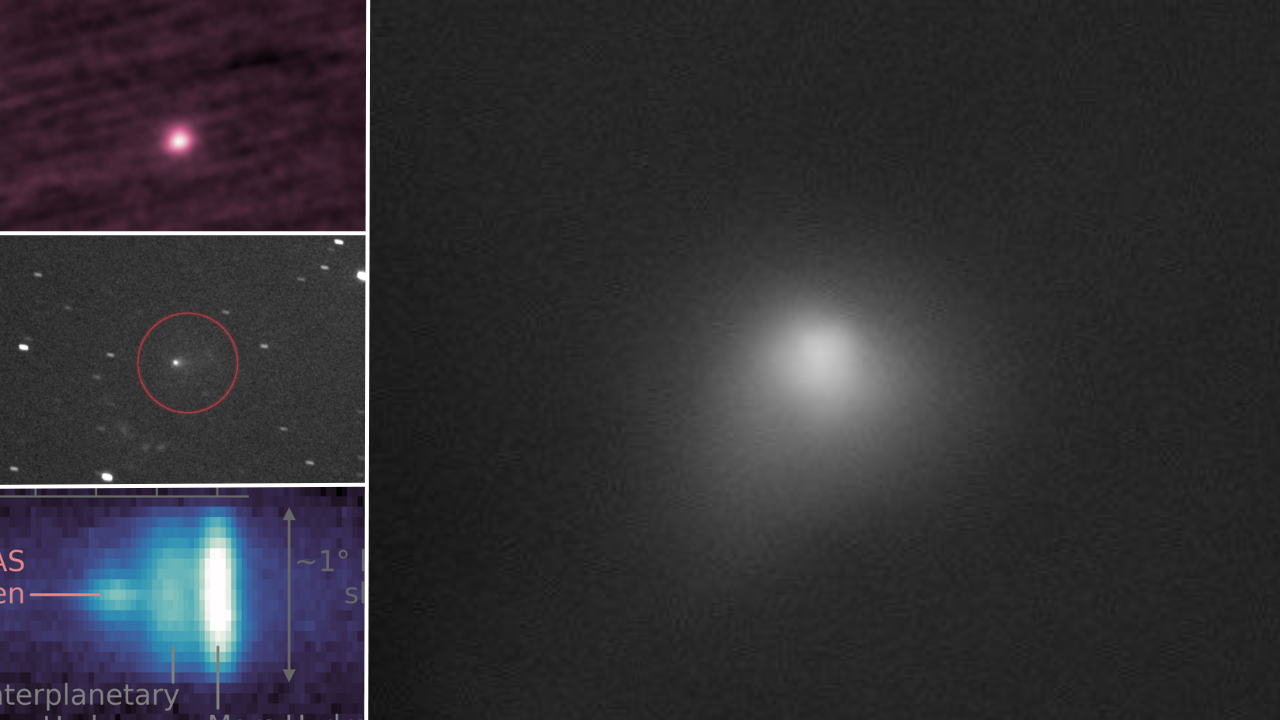Blood Moon 2018: Longest Total Lunar Eclipse of Century Occurs July 27

The longest total lunar eclipse of the 21st century takes place this Friday, July 27.
The total phase of the "blood moon" eclipse of July 27 will last 1 hour and 43 minutes, during which Earth's natural satellite will turn a spectacular red or ruddy-brown color. From start to finish, the entire celestial event will last nearly 4 hours.
The eclipse won't be visible to viewers in North America, except via webcasts. But observers in much of Africa, the Middle East, southern Asia and the Indian Ocean region will get an eyeful, given cooperative weather, according to lunar scientist Noah Petro, of NASA's Goddard Space Flight Center in Greenbelt, Maryland. [In Photos: The Rare Super Blue Blood Moon Eclipse of 2018]
July's total lunar eclipse occurs on the same day the planet Mars reaches its opposition, when it will shine at its best in the night sky. This month, Mars will be at its closest to Earth since 2003. After opposition, when Mars will be brightest, it will reach that closest point on July 31. You can learn more about that event in our dedicated guide here: Mars at Opposition 2018: How to See It and What to Expect
What is the Blood Moon of July 27?
Unlike with solar eclipses, you need no special equipment to observe lunar eclipses. These latter events, which occur when the moon passes into Earth's shadow, are safe to view directly with the naked eye, telescopes or binoculars.
The moon turns deep red or reddish brown during eclipses, instead of going completely dark. That's because some of the sunlight going through Earth's atmosphere is bent around the edge of our planet and falls onto the moon's surface. Earth's air also scatters more shorter-wavelength light (in colors such as green or blue); what's left is the longer-wavelength, redder end of the spectrum.
Where and when will it be visible?
The timing if this total lunar eclipse means it won't be visible from North America, though much of the Eastern Hemisphere of Earth will see part or all of the eclipse. The entire eclipse will be visible from Africa, the Middle East and countries in central Asia. The eclipse will be visible from eastern South America as it is ending, and from Australia as it is beginning.
Breaking space news, the latest updates on rocket launches, skywatching events and more!
The time of greatest eclipse will be 4:21 p.m. EDT (2021 GMT) on July 27, according to EarthSky.org. The total eclipse will last from 3:30 p.m. to 5:13 p.m. EDT (1930 to 2113 GMT). There will also be some time before and after when the moon is in the lighter part of Earth's shadow, which is called the penumbra. Including that penumbral time, the eclipse will last for 3 hours and 55 minutes. [Total Lunar Eclipse This Friday: How to Watch Online]
Why is it the longest of the century?
"What controls the duration of the lunar eclipse is the position of the moon as it passes through the Earth's shadow," Petro told Space.com. The darkest part of Earth's shadow is called the umbra. You can picture the umbra as a cone extending from Earth in the opposite direction to the sun, Petro explained.
"The moon can either graze through the cone, or go right through the middle. That [the middle] gets a longer-duration eclipse," he said. "This time, the moon is passing closer to the center of that cone, and it's therefore a little bit longer than the eclipse we had back in January." [Here’s How Friday's Superlong Lunar Eclipse Works]
Additionally, the moon will be at a farther point from Earth along its orbit, EarthSky pointed out. That means the moon will appear slightly smaller in the sky and will take a little bit longer to go through Earth's shadow.
Petro is also the project scientist for NASA's Lunar Reconnaissance Orbiter (LRO), which has been orbiting the moon for nine years. It is best-known for obtaining detailed information on water ice and taking high-resolution pictures of spacecraft on the lunar surface. Because LRO is an older probe, most of its components (except for battery warmers and the like) will be turned off during the eclipse, to preserve the solar-powered spacecraft's battery and keep it safe during the greatest part of the eclipse, Petro said.
When is the next lunar eclipse?
The next total lunar eclipse visible from North America will occur on Jan. 21, 2019. Totality on that day will last 1 hour and 2 minutes, and the eclipse will especially favor viewers on the West Coast. That year will also see a partial eclipse, on July 16, 2019 — the 50th anniversary of the launch of the first moon landing mission, Apollo 11. LRO will likely still be operating then, having passed its 10th anniversary of arriving at the moon on June 23, 2019.
Editor's note: If you capture an amazing photo or video of the total lunar eclipse or any other night-sky sight and would like to share it with Space.com for a story or gallery, send images and comments to spacephotos@space.com.
Follow us @Spacedotcom, Facebook or Google+. Originally published on Space.com.

Elizabeth Howell (she/her), Ph.D., was a staff writer in the spaceflight channel between 2022 and 2024 specializing in Canadian space news. She was contributing writer for Space.com for 10 years from 2012 to 2024. Elizabeth's reporting includes multiple exclusives with the White House, leading world coverage about a lost-and-found space tomato on the International Space Station, witnessing five human spaceflight launches on two continents, flying parabolic, working inside a spacesuit, and participating in a simulated Mars mission. Her latest book, "Why Am I Taller?" (ECW Press, 2022) is co-written with astronaut Dave Williams.

